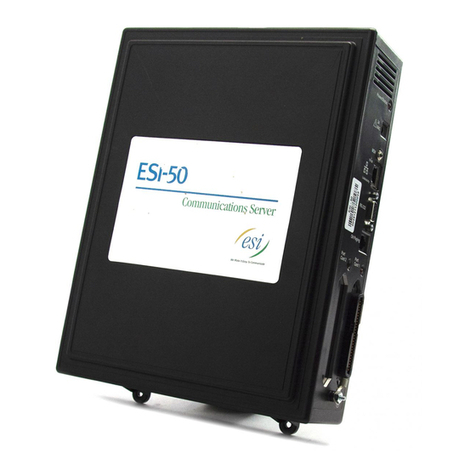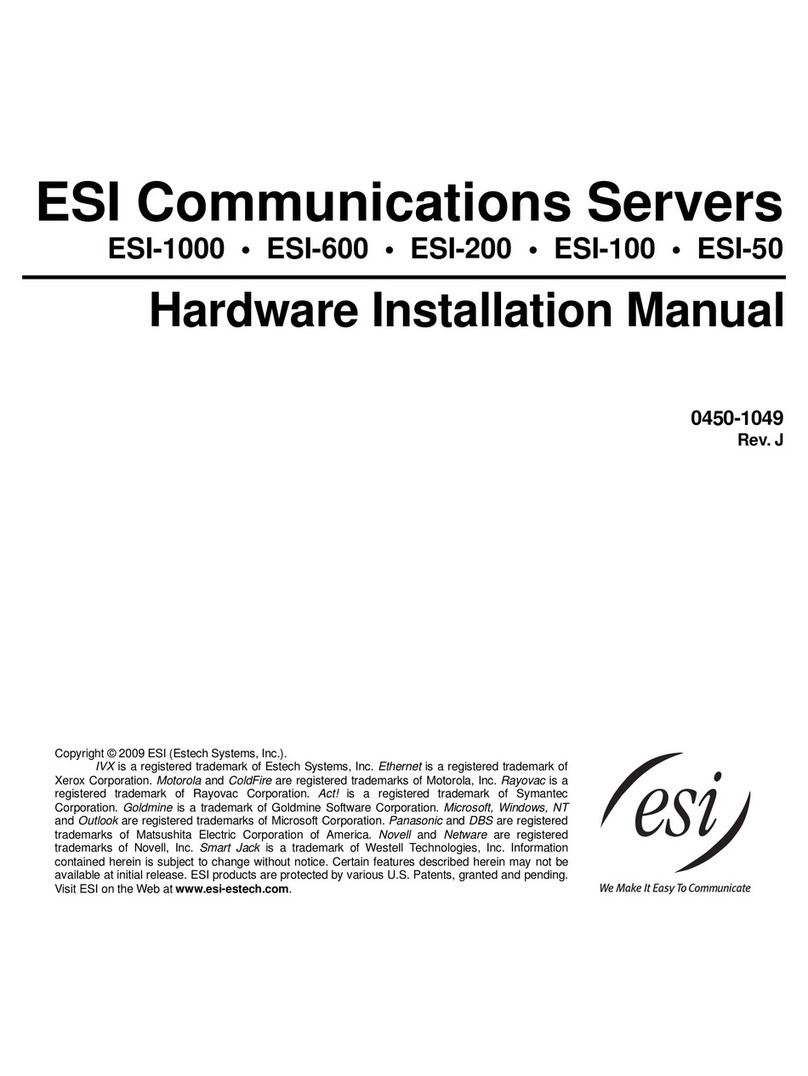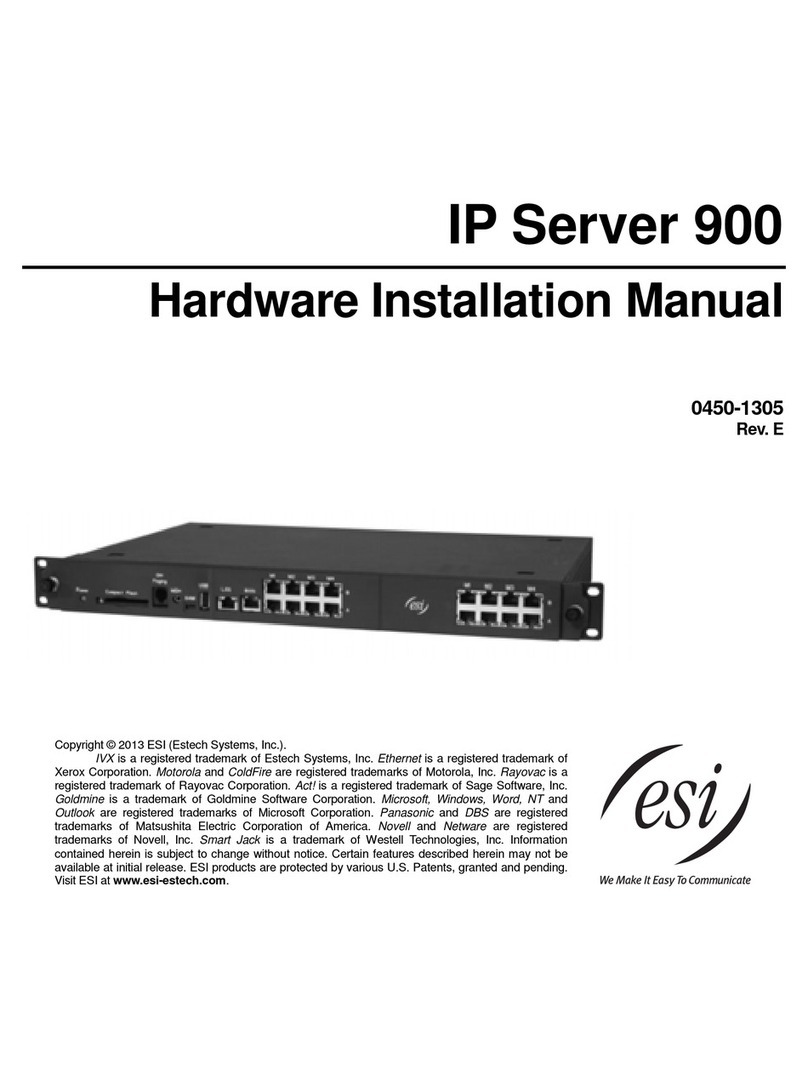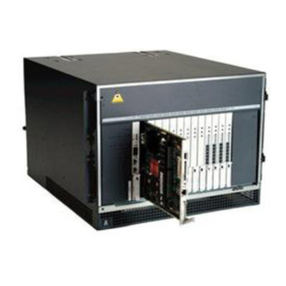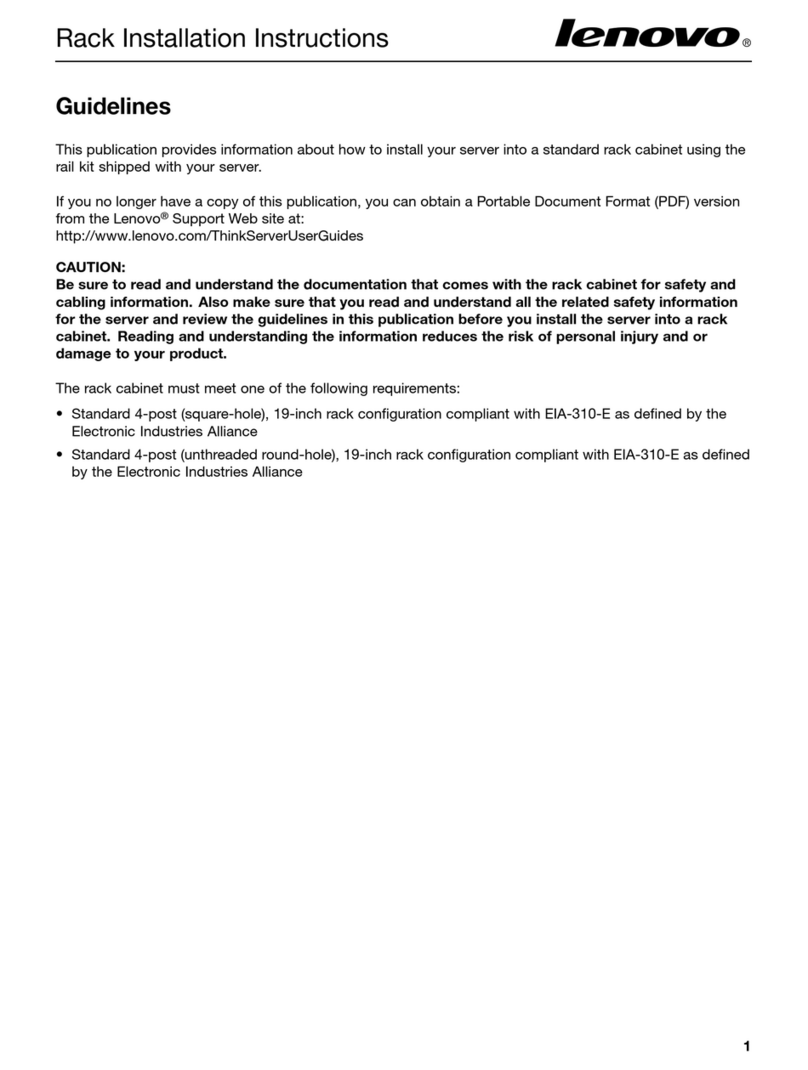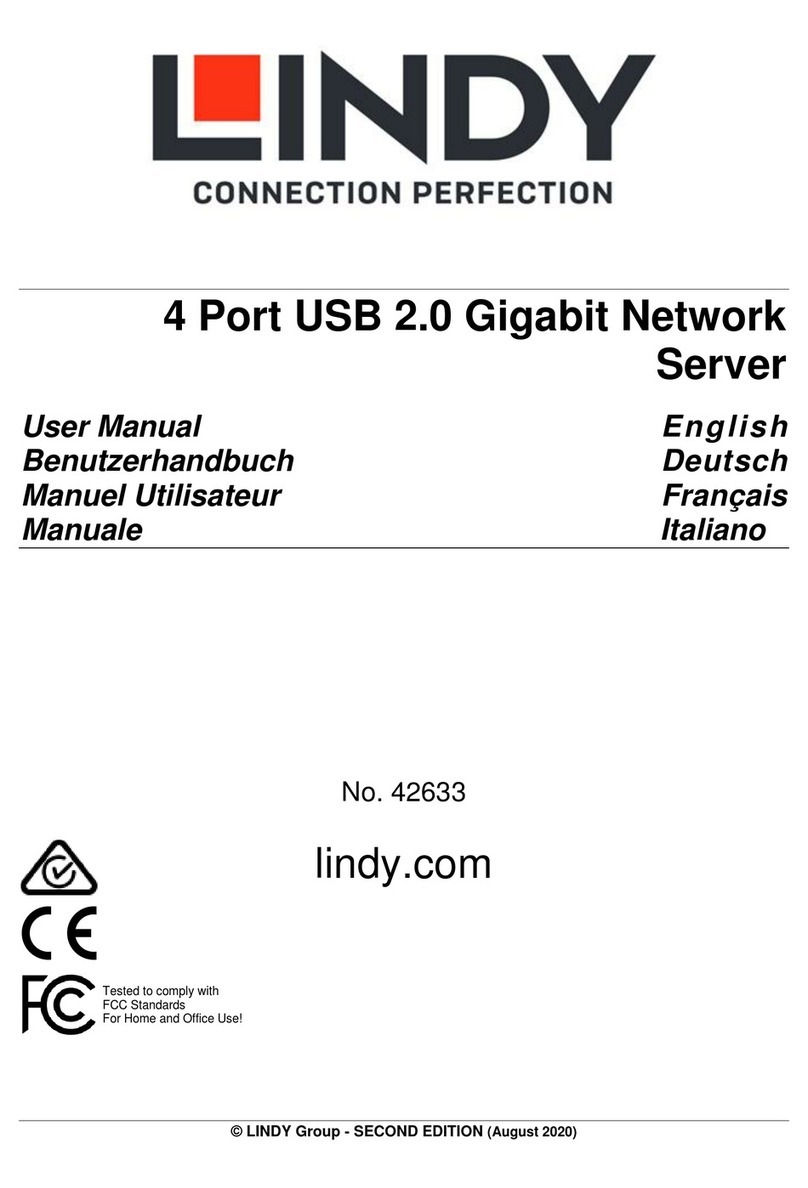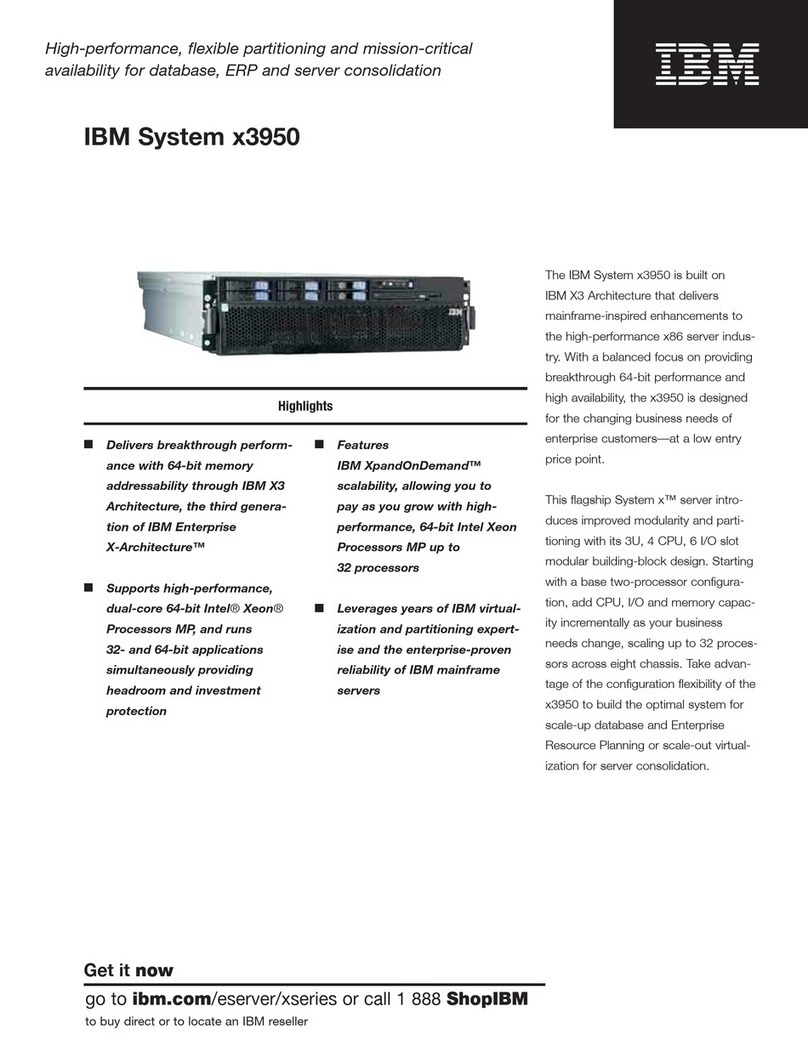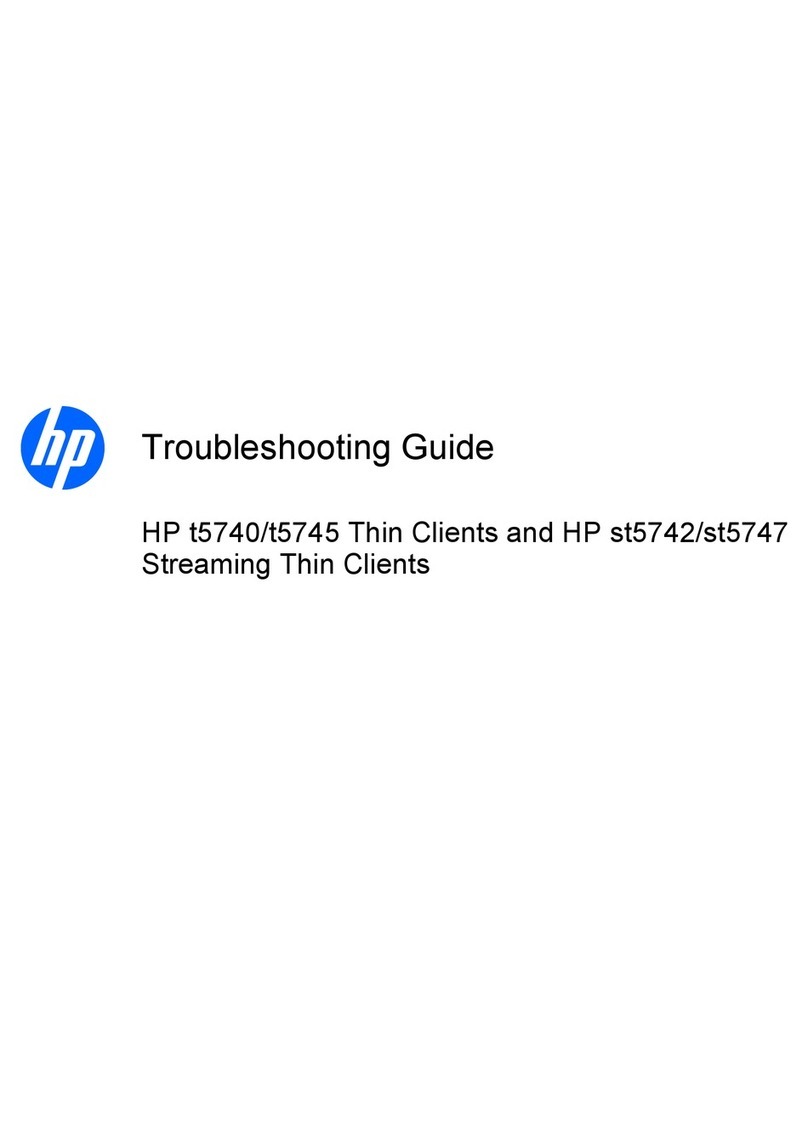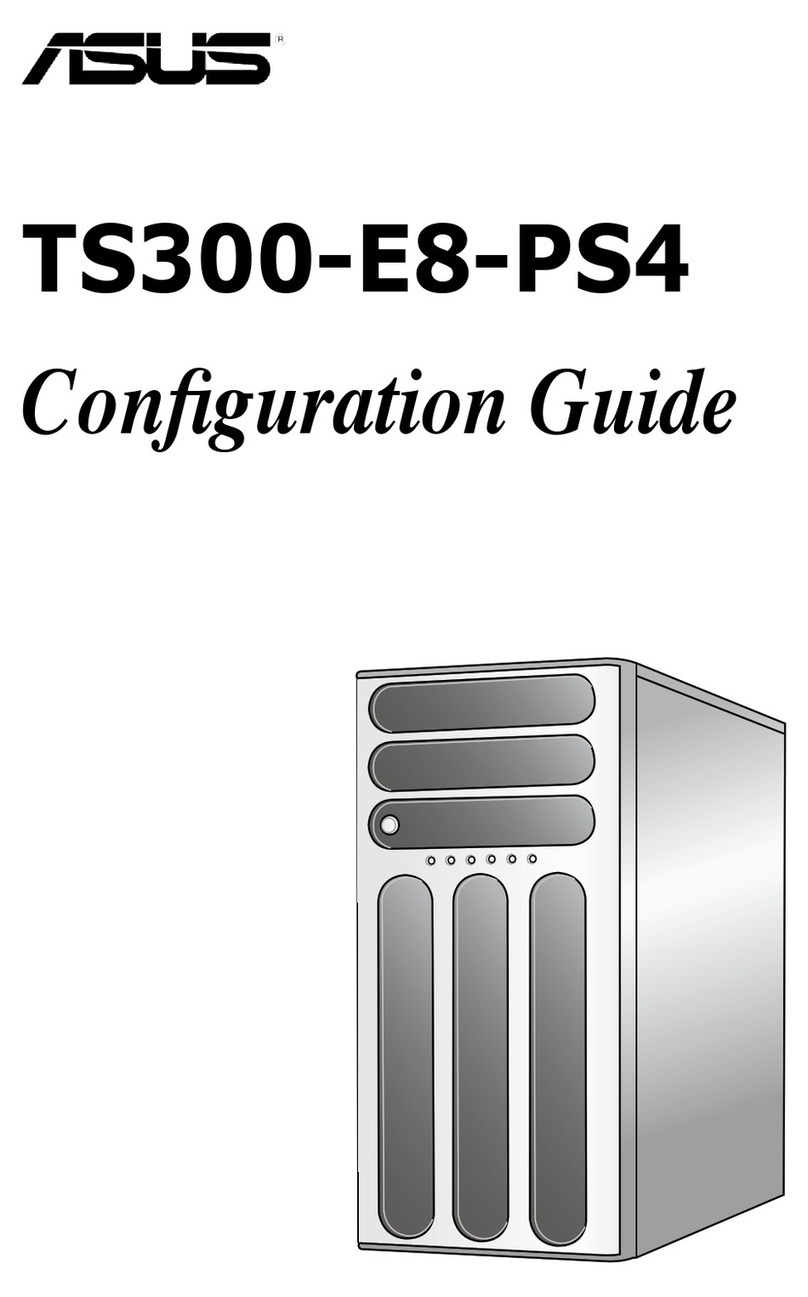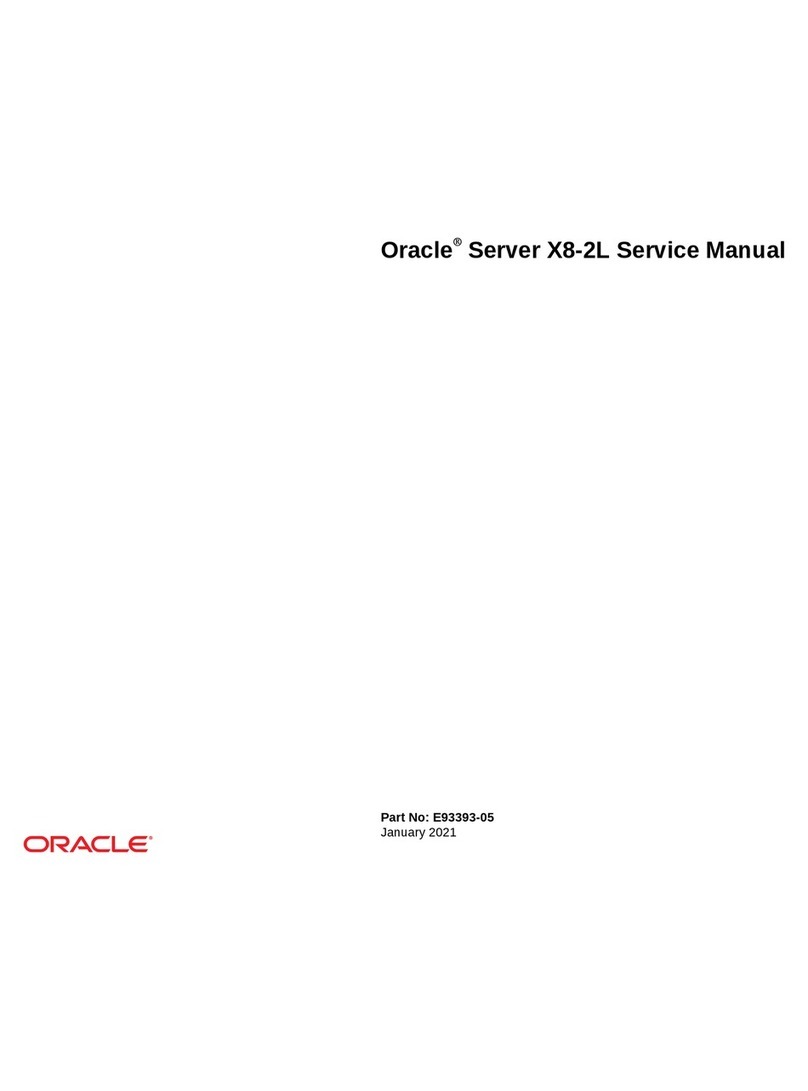ESI IP Server 900 Owner's manual

IP Server 900
Programming Manual
0450-1307
Rev. F
Copyright © 2013 ESI (Estech Systems, Inc.).
IVX is a registered trademark of Estech Systems, Inc. Ethernet is a registered trademark
of Xerox Corporation. Motorola and ColdFire are registered trademarks of Motorola, Inc.
Rayovac is a registered trademark of Rayovac Corporation. Act! is a registered trademark of Sage
Software, Inc. Goldmine is a trademark of Goldmine Software Corporation. Microsoft, Windows, NT
and Outlook are registered trademarks of Microsoft Corporation. Panasonic and DBS are registered
trademarks of Matsushita Electric Corporation of America. Novell and Netware are registered
trademarks of Novell, Inc. Smart Jack is a trademark of Westell Technologies, Inc. Information
contained herein is subject to change without notice. Certain features described herein may not be
available at initial release. ESI products are protected by various U.S. Patents, granted and pending.
Visit ESI at www.esi-estech.com.

Contents
General description..............................................................A.1
Flexible numbering.................................................................A.5
System capacities.................................................................B.1
System programming: An introduction...........................C.1
Function 1: System function programming ...................D.1
Function 11: System Initialization........................................... D.1
Functions 12 and 13:Installer and Administrator passwords.... D.1
Function 14: System clock and calendar ............................... D.2
Function 15: System timing parameters................................. D.4
Function 16: System feature parameters............................... D.5
Function 17: System speed-dial........................................... D.13
Function 18: SMDR settings................................................ D.14
Function 2: CO line programming ....................................E.1
Function 21: Line programming..............................................E.1
Function 22: Toll restriction, ARS, and DID programming.....E.25
Function 23: Line parameter programming...........................E.35
Function 24: Caller ID programming.....................................E.37
Function 3: Station programming..................................... F.1
Function 30: Station move......................................................F.1
Function 31: Extension definition and routing.........................F.2
Function 32: Extension feature authorization........................F.23
Function 33: Department groups..........................................F.28
Function 34: Reassign an extension, mailbox, or department
number..............................................................................F.35
Function 35: Extension button mapping................................F.41
Function 36: View local and remote IP feature phone parameters
..........................................................................................F.45
Function 37: ESI device programming..................................F.45
Function 4: Auto attendant programming ......................G.1
Function 41: Auto attendant branches...................................G.1
Function 42: Announce extension number.............................G.6
Function 43: Automatic day/night tables ................................G.7
Function 5: Voice mail programming...............................H.1
Function 51: Maximum message length.................................H.1
Function 52: Message purge control......................................H.1
Function 53: Guest/information mailboxes.............................H.2
Function 54: Group mailboxes (and the broadcast mailbox)...H.3
Function 55: Message notification options..............................H.3
Function 56: Cascade paging mailboxes................................H.5
Function 57: Q & A mailboxes................................................H.6
Function 58: Message move and delete.................................H.6
Function 6: Recording of prompts.....................................I.1
Function 61: Record system prompts.......................................I.1
Function 62: Record directory names.......................................I.2
Function 63: Message-on-hold / Music-on-hold (MOH)
programming.........................................................................I.3
Function 64: Call recording settings .........................................I.5
Function 7: Reports ..............................................................J.1
Report printing ........................................................................J.1
Reporting functions.................................................................J.1
Feature description: SMDR.................................................K.1
Standard tabular SMDR format..............................................K.1
CSV SMDR format.................................................................K.2
SMDR format when using account codes ..............................K.3
Reporting conventions and rules (standard and CSV formats)K.4
Extended SMDR format.........................................................K.5
Function 8: IP programming...............................................L.1
Function 81: Display licenses..................................................L.1
Function 82: Local IP-PBX programming................................L.2
Function 83: Esi-Link programming.......................................L.10
Function 84: SIP trunk programming.....................................L.13
Function 86: Unified Messaging selection.............................L.14
Function 87: Universal IP resource programming..................L.15
Index
Important: For information concerning the hardware installation for an IP Server 900, see the IP Server 900 Hardware
Installation Manual (ESI document #0450-1305).

IP Server 900 Programming Manual General description
A.1
General description
ESI’s IP Server 900 is a high-performance IP phone system that unites the communication and productivity
needs of end users in small-to-medium organizations with one or more sites. The IP Server 900 represents the
latest generation of ESI’s advanced communications systems, and provides much more than standard phone
service.The IP Server 900’s powerfulVoice-over-IP (VoIP) features allow your customers to transition smoothly
from traditional circuit-switched telephony to cost-efficient IP-network-based telephony. VoIP features include
support for SIP phones and trunks, ESI IP phones, VIP 7 Softphone, and T.38 Fax-over-IP. Standard features
include voice mail, automated attendant,automated call distribution (ACD), external paging interface, and
extensive call coverage features (such as off-premises “reach-me”). Optional features include
computer/telephony integration, video and audio recording, and presence management.
You, or an Administrator, can program the system locally or remotely through either a phone or over Ethernet®
with ESI’s browser-based IP Server 900 Web ESI System Programmer application through the system’s built-in
Network Services Processor (NSP).
Important: Except where noted, the remainder of this “General description” chapter describes only features, rather than
any system capacities. For system-specific capacity specifications — e.g., CO lines, ports, message
storage, etc. — see “System capacities” (page B.1).
The 48-Key Feature Phone has a dedicated PROGRAM key. If performing this programming with a 48-Key
Feature Phone, press PROGRAM whenever the instructions tell you to press PROG/HELP.
Telephone system features
• SIP trunking support — Connect the IP Server900 to an Internet Telephony Service Provider (ITSP) in
order to use the Session Initiation Protocol (SIP) VoIP standard to connect to the PSTN over the Internet.
SIP trunks can provide a significant costsavings over traditional CO lines, particularly by lowering or
eliminating long distance toll charges.
• T.38 fax support — Due to the error-correction necessary in processing VoIP audio, faxes can often
become distorted or get lost altogether. The IP Server 900 SIP trunks allow the transmission of faxes over
the industry-standard T.38 protocol to ensure that faxes can be sent and received correctly. For more
information about T.38 faxing on the IP Server 900 see the IP Server 900 Fax-over-IP Feature Overview
(ESI document # 0450-1355).
• ESI fax over e-mail — Receive faxes and have them converted to a PDF file and sent as an email
attachment to a predefined email address. For more information about the IP Server 900’s internal fax server,
see the IP Server 900 Fax over e-mail Feature Overview (ESI document # 0450-1354).
• T1 and PRI support — Conventional high-bandwidth digital CO lines are fully supported.
• ESI phones — Compact and stylish, yet rugged, each ESI phone includes a high-quality speakerphone,
large and informative multi-functional display, and a specially designed key layout with several dedicated
keys to minimize or eliminate the need to memorize codes. The following models are supported on the IP
Server 900:
• ESI 60 Business Phone — Digital and two IP (Gigabit Ethernet and 10/100 Ethernet) versions. Each
includes an integrated headset jack, a backlit display, and full-duplex HD-quality speakerphone.
• ESI 40 Business Phone — Digital and IP (10/100 Ethernet) versions. Each includes an integrated
headset jack and a backlit display.
• ESI 30D (digital) Business Phone.
• 48-Key Feature Phone — Digital and IP (10/100 Ethernet) versions. Each includes an integrated headset
jack, a backlit display, and full-duplex speakerphone.
• ESI Cordless Handset II — Available in digital and two (local and remote) IP versions.1
• Extensive help — ESI’s Verbal User Guide™uses spoken anddisplayed help prompts to help everyone from
the Installer through the Administrator down to the least experienced end user.Easily accessible with one
press of the PROG/HELP key. One can also visitwww.esi-estech.com/support for help.
• Enhanced Caller ID — Allows one-touch automatic message return.1An IP Server 900 passes Caller ID
data to both digital and analog ports.
1See also the IP Server 900 Hardware Installation Manual (ESI document # 0450-1305).

IP Server 900 Programming Manual General description
A.2
• Live call recording — Can record any conversation or personal memo, with moving or copying of any
recording to another user’s voice mailbox (see “Voice mail features,” page A.4).
• Call waiting — Includes helpful display, showing both calls’ Caller ID information, and easy one-key toggling
between calls.
• Conference calling — Includes up to 64 dynamic conference ports; a single conference may contain up to
16 members.2Conference bridges are dynamic, so possible conference sizes include: 21 three-member; 16
four-member;10 six-party; and various combinations in-between. Analog phones on the system also may
originate conferences. “Meet-me” conferencing allows easy setup of conference calls; participants who dial
into (or are transferred to) a pre-established number for a conference call ata specified time are connected
together — reducing or eliminating the need for third-party conferencing services.
• Esi-Dex™speed-dial — Calls any number using four separate lists (personal, station, system and — when
Esi-Link is in use — cabinet location);uses Caller ID information or direct keypad entries.
• Dedicated overhead paging interface — Allows for external paging through overhead speakers or multi-
zone paging units (amplification required) and separate, vendor-supplied zone page adapters.
• Intelligent Call Forwarding™— Lets users of compatible PRI-equipped ESIsystems view the original Caller
ID data of a call forwarded to an off-premises phone.
• 911 alert — Provides immediate line access if any station3dials 9 1 1 to report an emergency; sends a
message via the serial port indicating the startdate, time, station number and end-time of the 911; also
sounds an audible warning at the operator station and displays, for example:
911 CALL FROM
X102 JOHN JAMES
Important: Remember to advise your customers not to make 911 calls using a remote IP phone.4Becausesuch a
phone isn't connected directly to the local telephone network, they should use a regular phone
connected locally, not the remote IP phone, to make 911 or other emergency calls. (For more
information, see the documentation included with the remote IP phone.)
• Shared-office tenants — Tenant service allows multiple business entities to share a telephone system while
maintaining separation of various facilities and features. For more details, see “Shared-office tenanting,”
page A.5.
• Twinning — Lets a user set his/her extension so that an incoming call will ring both it and an additional
number simultaneously. The additionalnumber can be either an internal extension or an off-premises
number,such as a cellphone or home phone.
1This and all other references to Caller ID service within this manual assume the end-user organization subscribes to Caller ID service from its
telephone service provider.
2See “System capacities” (page B.1).
3An ESI Remote IP Cordless Handset (II or original) sends 911 calls via the local analog CO line attached to the Cordless Handset’s base station.
The 911 alert information isn’t available at the operator station or viaserial port.
4A remotely installed ESI desktop IP phone, a Remote IP Cordless Handset, or a remote installation of VIP Softphone.

IP Server 900 Programming Manual General description
A.3
• Support for these options:
–Esi-Link — Allows a multi-site enterprise to network any combination of dozens of compatible ESI systems
across an IP-based network. For details, see the Esi-Link Product Overview (ESI document # 0450-0214).
Notes: The ESI-50 uses only the G.726 speech compression algorithm and, therefore, can be in an Esi-Link
network with only other ESI systems (specifically, the IP Server 900 and ESI Communications
Servers) which have been set to G.726 (in Function 835; for details, see page L.12).
ESI’s IVX®X-Class and IVX E-Class systems, as well as the original ESI-600 (prior to system
software version 16.2.0), use only the G.729 speech compression algorithm; thus, an ESI-50 cannot
be in an Esi-Link network with these systems.
–VIP 7™— Provides a value-added interface to the IP Server 900 and most other ESI systems. Delivers call
control and on-screen message handling. For details, see the VIP 7 Product Overview (ESI document #
0450-1340).
–ESI Presence Management — Provides integrated building entry control, access control, status
indication, personal call routing, and (optionally) time and attendance management. Fordetails, see
the ESI Presence Management Product Overview (ESI document # 0450-0794).
–ESI Mobile Messaging — Lets users receive messages (voice mails and recordings)as .WAV attachments
to regular e-mails; works with any standard e-mail clientapplication.
–ESI Media Management — A hardware and software solution that offers storage of live video and audio
as well as the storage ofSMDR records and fob activity from ESI Presence Management RFID Readers.
The IP Server 900 supports external media storage to only eSATA drives. For more information on ESI
Media Management and external drive configuration see the ESI Media Manager Installation Guide (ESI
document # 0450-1240).
–ESI Video Management — A hardware and software solution that offers live video monitoring, along with
specialadded functionality when used in conjunction with ESI Presence Management.

IP Server 900 Programming Manual General description
A.4
Voice mail features
• Built-in voice mail ports — These are in addition to the call-processing ports; thus, you may build the
system to its maximum for call-handling without having to balance voice mail needs versus call-handling needs.
For specific voice storage capacities on a system-by-system basis, see “System capacities” (page B.1).
• Highest-grade voice quality (64-kilobit/second sampling) for voice mail and other storage of voice messages.
• Message-on-hold (MOH) recordings — Among these are threeprerecorded tracks; also supports live entry. With
tenant service enabled (see “Tenant service features,” page A.5), each tenant has its own MOH source.
• Off-premises message delivery — Automatically delivers voice messages to designated phone number,
such as a cell phone, when one is out of the office.
• Urgent messages — Can deliver higher-priority messages first.
• Several different mailbox types, including group, broadcast, informational, cascade notification and Q & A.
• Message Recycle Bin (undelete) — Remembers, and can restore, each mailbox’s 10 most recently
deleted messages.
• Quick Groups™— Makes iteasy to leave voice mail messages forseveral users.
• Quick Move™— Records a conversation into another user’s mailbox.
• Virtual Mailbox Key™allows easy monitoring of a second mailbox.
• Optional ESI Mobile Messaging delivers voice mail as a .WAV file to your “smart” phone or the inbox of
nearly any e-mail client application.
• Find-Me allows users to store up to 5 phone numbers that the system will use to attempt to locate them
when they don’t answer their desktop phone. The numbers are dialed sequentially, allowing a user to give
some numbers priority over others. A totalof 1,000 Find-Me numbers can be stored per system.
Auto attendant features
• Six levels, 100 branches — Allow you and your customer to set up a more caller-friendly answering
environment, including a company directory.
• Virtually unlimited call routing — Includes off-premises transfer, pager notification, more.
ACD features
• Routes calls within designated departments for quickest possible call answering.
• Uses three-line ESI phone display to provide up-to-the-second information on queues, wait times, delay
announcement, priority queueing, and overflow routing.
• Optional VIP 7 ACD Supervisor and VIP 7 ACD Agent enhance ACD usage; VIP 7 ACD Supervisoroffers
highly useful reports and also gives ability to customize reports.1
(Continued)
1Report customization requires Microsoft SQL Server Business Intelligence Development Studio (not available from ESI).

IP Server 900 Programming Manual General description
A.5
Shared-office tenanting
• Can be configured to support up to eight tenants.1
• CO lines — CO line groups and corresponding access codes can be used to separate each tenant’s CO lines if
required. “Pooled” or shared lines can be assigned to a line group to which all stations are allowed access.
CO lines are assigned to tenants for the purpose of following each tenant’s day/night mode.
• Stations and departments — Each station and department can be assigned to one tenant.
• Automatic day/night mode — If this is enabled, each tenant will follow day/night mode changes assigned in
its unique table.
• Day/night key — A day/night key may be assigned to select day or night mode manually foreach tenant.
• Auto attendant day/night greeting — Each tenant may use a dedicated day/night branch ID2to route to a
destination. Day/night routing will be controlled either automatically by each individual tenant’s day/night
tables or manually by use of a day/nightkey foreach tenant.
• Message-on-hold (MOH) — Each tenant will have a unique customer-recorded MOH source.
• Central answering — Central answering makes it possible for one extension (or department) to answer
incoming calls to different tenants.
• Operator (dial-“0”) routing — Unique operator call routing may be assigned to each tenant.
• Hold — Foreach tenant, a specific MOH can be assigned, based on CO line.
Flexible numbering
Flexible numbering provides the means to assign extension, voice mailbox, and department numbers based on
specific customer requirements. ESI’s flexible numbering is separated into three parts:
1. Selection of a starting numbering plan template.
2. Reassignment of ranges of extensions and (if needed) guest mailboxes.
3. Reassignment of individual extensions and (if needed) guest mailboxes and department numbers.
Selectable numbering plans (Function 169)
The selectable numbering plan template is the basis for flexible numbering assignment. When a
numbering template is selected, all extensions, mailboxes, departments, and other system features are
automatically assigned with the numbering plan of that template. Choosing the template that is closest to the
customer’s existing configuration greatly simplifies,or even eliminates the need for, number reassignment.
(See “Selectable numbering plan,” page C.2.)
Note: Full system capacity can be achieved only through use of a four-digit selectable numbering plan (see
page C.2).
(Continued)
1See “System capacities” (page B.1).
2See“Function 41: Auto attendant branch programming,” pp.G.1–G.6.

IP Server 900 Programming Manual General description
A.6
Range reassignment (Function 34 extended; IP Server 900 Web ESI System
Programmer only)
Included in IP Server 900 Web ESISystem Programmer, flexible number range assignment is used to
change the numbers ofa block, or range, of extensions or guest mailboxes.1Range reassignment can be
used either at time of installation or after the system is installed.
Number reassignment (Function 34)
Number reassignment lets you assign new (or reassign existing) individual extensions2, departments, and
guestmailbox numbers — all throughout the entire Esi-Link network.
Station move (Function 30)
Station move is used by the Installer or System Administrator to move, or exchange, extension numbers and
other station information between extensions of the same station type.3Programmable feature keys, personal
greetings, voice mail messages, and other system information are automatically and instantly exchanged
between the two stations when this is done.
Esi-Link and flexible numbering: Limitations
The following table lists the Esi-Link compatibility of various ESI products with an IP Server 900 using
flexible numbering.
REMOTE site’s ESI system REMOTE site’s
system software version LOCAL system’s
numbering plan template Resulting Esi-Link
compatibility
IP Server 900 [All] Any Complete
ESI-1000, -200, -100, or -50 [All] Any Complete
Feature Set II (16.1.0 or higher) Any Complete
ESI-600 Feature Set I (15.2.x or lower) Any Limited
Any three-digit Limited
10.6.0 or higher Any four-digit None
Dial plan template 100 Limited
IVX X-Class 10.5.x or lower Any other dial plan None
Any three-digit Limited
2.5.2 or higher Any four-digit None
Dial plan template 100 Limited
IVX E-Class Generation II 2.5.1 or lower Any other dial plan None
In this chart, limited compatibility means that, when you use Function 34 (number reassignment), you must
keep the extension and mailbox ranges within their original numbering plan template ranges.
Example: Let’s say your local system is an ESI-600 using numbering plan 100. If you swap extension 100 with
mailbox 300 — i.e., so that station 100 is now extension 300, and mailbox 300 is now mailbox 100 — an
IVX X-Class system that dials station 300 over Esi-Link won’t be able to process the call correctly,
because that station is no longer within the numbering template. However, if you merely swap
extensions 100 and 120 on that same ESI-600, an Esi-Linked IVX X-Class will be able to process a call
to extension 120 (because the changed extension is still within the numbering template).
For proper operation, two or more Esi-Linked IP Server 900 systems should all be running the same system
software version. However, an ESI system without flexible numbering-compatible system software will still be
compatible with an IP Server900 with flexible numbering-compatible system software; yet, the IP Server 900
with flexible numbering will remain subject to the same Function 34-related limitations described above.
1Range assignment of department numbers and special-purpose mailboxes is not supported at initial release of this system software. However,
Function 34 can be used to reassign department numbers.
2Valid extensions also can be swapped throughout the Esi-Link network.
3Such stations must be like types — e.g., ESI digital phone to ESI digital phone, ESI IP phoneto ESI IP phone, or analog extension to
analog extension.

IP Server 900 Programming Manual System capacities
B.1
System capacities
Important: Each ESI Presence Management RFID Reader uses one digital station.
Stations and trunks
The specifications shown below reflect maximum capacities and configurations. Not all of the station and trunk
maximums can be reached simultaneously.
Dialing plans (-digits)
Four Three
Maximum modules 8 8
Maximum port configuration1500 400
– Maximum stations 191 168
– Maximum IP stations 127 127
– Maximum digital stations 64 64
– Maximum analog stations 32 32
Maximum CO lines 192 84
Maximum T1/PRI Modules 2 2
Esi-Link channels 127 127
SIP trunking capability (Built-in) (Built-in)
Maximum number of SIP trunks 127 84
Maximum lines available 192 84
Dedicated ports
Dialing plans (-digits)
Four Three
Voice mail/auto attendantports 32 32
Conference ports (max. of 16 members
per conference) 64 64
NSP21 1
Overhead paging ports 1 1
Serial/SMDR ports n/a n/a
Meet-Me Conference Bridges 4 4
Voice mail capacities
Dialing plans (-digits)
Four Three
Voice mail storage (hours) 140 140
Broadcast mailbox (one to all extensions) Yes Yes
Cascade notification mailboxes 20 10
Group mailboxes/max. members 32/64 32/64
Guest/info mailboxes 1,000 190
Maximumstation mailboxes 191 168
Q & A mailboxes 20 10
Maximum unheard messages per mailbox 128 128
Maximum stored messages per mailbox 256 256
Find-Me stored phone numbers 1,000 1,000
1Includes Esi-Link channels.
2Network Services Processor; see the IP Server 900 Hardware Installation Manual (ESI # 0450-1305).

IP Server 900 Programming Manual System capacities
B.2
Departments
Dialing plans (-digits)
Four Three
Max. departments 64 20
Department types: Ring-all, ACD, UCD, in-
order, pick-up, attendant Yes Yes
Max. members, non-ring-all depts. 64 64
Max members, ring-all depts. 64 64
Automatic call distribution (ACD)
Dialing plans (-digits)
Four Three
Max. ACD departments 64 20
Max ACD agents per department 64 64
Max ACD agents (system-wide) 191 168
Shared-office tenanting
Dialing plans (-digits)
Four Three
Tenants 8 8
CO line groups
Dialing plans (-digits)
Four Three
Line groups 9, 8, 71–76 Yes Yes
Max. members, CO ring assignment list 64 64
Translation tables
Dialing plans (-digits)
Four Three
Pilot numbers 100 100
Max. DID entries 600 600
System speed-dial numbers
Dialing plans (-digits)
Four Three
System speed-dial numbers 1,000 100
Maximum installations of VIP 7 applications
Dialing plans (-digits)
Four Three
Installations, VIP7 PC Attendant Console 8 8
Installations, VIP 7 ACD Supervisor 8 8

IP Server 900 Programming Manual System capacities
B.3
ESI Presence Management features
Dialing plans (-digits)
Four Three
RFID Reader access door records 10,000 10,000
RFID Reader entries in Fn. 372132 32
Max. RFID tags (“electronic keys”) 500 500
ESI Mobile Messaging features
Dialing plans (-digits)
Four Three
Maximum stations 191 168
Maximum guest mailboxes 250 250
ESI Video Viewer and ESI Video Adapters
Dialing plans (-digits)
Four Three
ESI Video Adapters (see below) 12 12
RFID Readers per ESI Video Adapter 1 1
User extns./depts. per ESI Video Adapter 64 64
ESI Video Viewer users 20 20
Although the system supports up to 12 cameras, a variety of other factors can affect the maximum number of usable cameras. The frequency and
duration of video recordings from each camera as well as overall network load to the system — such as local or remote IP phones, SIP trunks,
SIP stations, and usage of ESI applications (e.g., ESI Mobile Messaging, VIP 7, or ESI Presence Management) — can severely impact the
performance of both the cameras and the IP Server 900. The following chartcan be used as a general guideline for determining the number of
cameras supported based on system configuration and usage:
Number of users Light usage Medium usage Heavy usage
20 12 cameras 12 cameras 10 cameras
40 12 cameras 10 cameras 8 cameras
60 10 cameras 8 cameras 5 cameras
120 8 cameras 6 cameras 4 cameras
ESI Media Management features
Dialing plans (-digits)
Four Three
Video recordings 12 12
Audio recordings 32 32
SMDR events Yes Yes
Fob activity Yes Yes
ESI Media Manager users 20 20
1See the ESI Presence Management Installation Manual (ESI document # 0450-0792).

IP Server 900 Programming Manual System programming: An introduction
C.1
System programming: An introduction
You can program an IP Server 900 either (a.) from an ESI desktop phone1in the system or (b.) with IP Server 900
Web ESI System Programmer. Both methods follow the same programming steps. This manual focuses on
programming from an ESI desktop phone; for more information on local or remote administration through the
Web programming interface, consult the IP Server 900 Web ESI System Programming Manual (ESI document
# 0450-1366).
Read the User’s Guide first. Programming features requires a clear understanding of the users’ interface,
features, and applications.
Once you’ve accessed programming mode on an ESI desktop phone, the system will prompt for — and confirm
— each keystroke action via voice commands and the display. You program both configuration data and
recordings in the same manner.
Important: During programming, the ESI 30D’s two-line display shares the same content as the top two lines of the
three-line display found on most current ESI desktop phones. As a result, to save space, the sample
displays shown herein will show only two lines.
If installing ESI Presence Management on this system, refer to the ESI Presence Management Installation
Manual (ESI document # 0450-0792) for important information before you program the system.
Programming keys
During programming, the first line of the display will show the current item being programmed, and the second line
will be the entry line. You can enter values as directed by the combination of the voice prompts and display.
To enter multiple values, such as a list of extension numbers, separate each value by #(to exit the list, enter # #).
To... Press ... What this does
Enter # Confirms new or existing entry and advances to next
programming step.
Back up (i.e., reverse direction) Backs up to previous prompt without changing its value.
Delete HOLD Deletes data or recording.
Exit [Hang up] Exits programming mode and removes extension from DND.
Help HELP Provides more detailed instructions during programming.
(left-side scroll key) • During entry of a value, backs up.
• If a list is present (“>” is displayed), scrolls to left.
Select/scroll
(right-side scroll key) • Selects from options presented.
• If a list is present (“>” is displayed), scrolls to right.
• Inserts a space during entry of a name.
Notes: Either <or >in the display indicates that additional choices or values are available by pressing a
corresponding scroll key (or ).
Only one person at a time can be performing Installer or Administrator programming.
1ESI system programming cannot be performed using an ESI Cordless Handset.

IP Server 900 Programming Manual System programming: An introduction
C.2
Entering alphanumeric characters
You enter names for extensions, departments, branch IDs, CO lines, guest mailboxes and DIDs by
pressing the dial pad key that corresponds to the character to be entered. The key’s possible entries will change
each time the key is pressed, and the display will show this. When the desired character appears on the display,
press #to confirm; the cursor will move to the next character position. You may move the cursor left (to correct
an entry) by pressing the left scrollkey () or move right (to add a space) by pressing the right scrollkey ().
Key Options Key Options
0 0, - (hyphen), _ (underline) 7 P, R, S, p, r, s, 7
1 Q, Z, q, z, 1, “_” (space) 8 T, U, V, t, u, v, 8
2 A, B, C, a, b, c, 2 9 W, X, Y, w, x, y, 9
3 D, E, F, d, e, f, 3 (left scroll key) Backs up and erases
4 G, H, I, g, h, i, 4 (right scroll key) Adds a space
5 J, K, L, j, k, l, 5 # [Enter]
6 M, N, O, m, n, o, 6 # # Ends the name
Important: Lower-case letters are available only for programming the settings for Function 2142 (p. E.18) and
Function 823 (page L.7).
Example: To enter a B, press 2twice (the possible options to scroll through are A, B, C, a, b, c, and 2). When Bappears,
press #to confirm; thecursor will move to the next character to be entered. Tocomplete the name, press # #.
Note: On an incoming call, the name you assigned to the call’s CO line or DID — rather than the Caller ID data —
will appear until the call is answered.
Selectable numbering plan
The IP Server 900’s selectable numbering plan offers up to nine pre-configured ranges — three three-digit plans
and six four-digit plans. When an extension range is selected, department numbers and guest mailbox numbers
are also changed. However, regardless of which extension range is selected, feature key codes, and CO line
group access numbers will stay the same. The dial plan range is selected through Installer programming
Function 169 (see page D.11 for more information).
Notes: The ESI Presence Management RFID Reader1uses one digital or IP extension, regardless of dial plan.
An ESI desktop IP phone, the IP Cordless Handset (Local or Remote), VIP 7 Softphone, and a SIP phone
each uses one IP port, regardless of dial plan.
Important: Full capacity on the IP Server 900 can be achieved only by using a four-digit plan. (See “System
capacities,” page B.1.)
Line groups
The numbers 9, 8, and 71–76 are designated as line groups.A line group is, as the name implies, a specific
group of lines in a key system that are used for making outgoing calls. In an IP Server 900, line groups give
phones access to outside lines without taking up any programmable keys on each phone.
Note: Line groups 71–76 may conflict with Esi-Link locations 710–769 (if they’re needed); refer to Function 164
(see page D.7).
1For more information, see the ESI Presence Management Installation Manual (ESI # 0450-0792).

IP Server 900 Programming Manual System programming: An introduction
C.3
Three-digit selectable numbering plan templates for the IP Server 900
Selection 100 (default) Selection 200 Selection 300
From
To
Used for From
To
Used for From
To
Used for
100
267
Extensions 200
367
Extensions 300
467
Extensions
280
299
Departments 380
399
Departments 470
489
Departments
300
489
Guest/info mboxes 100
199
Guest/info mboxes 100
289
Guest/info mboxes
270
273
Conference bridge 400
489
Guest/info mboxes 290
293
Conference bridge
370
373
Conference bridge
Common to all three-digit numbering plan selections for the IP Server 900
From
To
Used for From
To
Used for From
To
Used for
0
—
Operator #500
#599
Featurekey codes 8
—
CO line grp.
490
499
Q & A mailboxes 600
699
System speed-dial 9
—
CO line grp./ARS
500
—
Broadcast mailbox 700
709
Esi-Link1locations
—
Call pickup
501
532
Group mboxes 770
799
Esi-Link locations #
—
Paging
533
542
Cascade notif. mboxes 71
76
Esi-Link/CO line grps.
Four-digit numbering plan selection for the IP Server 900
Selection 1000 Selection 2000 Selection 3000
From
To
Used for From
To
Used for From
To
Used for
1000
1863
Extensions 2000
2863
Extensions 3000
3863
Extensions
1864
1927
Departments 2864
2927
Departments 3864
3927
Departments
3000
3999
Guest/info mboxes 3000
3999
Guest/info mboxes 2000
2999
Guest/info mboxes
4000
—
Broadcast mailbox 4000
—
Broadcast mailbox 4000
—
Broadcast mailbox
4001
4032
Group mboxes 4001
4032
Group mboxes 4001
4032
Group mboxes
4040
4059
Q & A mboxes 4040
4059
Q & A mboxes 4040
4059
Q & A mboxes
4060
4079
Cascade notif. mboxes 4060
4079
Cascade notif. mboxes 4060
4079
Cascade notif. mboxes
4080
4083
Conference bridge 4080
4083
Conference bridge 4080
4083
Conference bridge
6000
6999
System speed-dial 6000
6999
System speed-dial 6000
6999
System speed-dial
Selection 4000 Selection 5000 Selection 6000
From
To
Used for From
To
Used for From
To
Used for
4000
4863
Extensions 5000
5863
Extensions 6000
6863
Extensions
4864
4927
Departments 5864
5927
Departments 6864
6927
Departments
3000
3999
Guest/info mboxes 3000
3999
Guest/info mboxes 3000
3999
Guest/info mboxes
2000
—
Broadcast mailbox 4000
—
Broadcast mailbox 4000
—
Broadcast mailbox
2001
2032
Group mboxes 4001
4032
Group mboxes 4001
4032
Group mboxes
2040
2059
Q & A mboxes 4040
4059
Q & A mboxes 4040
4059
Q & A mboxes
2060
2079
Cascade notif. mboxes 4060
4079
Cascade notif. mboxes 4060
4079
Cascade notif. mboxes
2080
2083
Conference bridge 4080
4083
Conference bridge 4080
4083
Conference bridge
6000
6999
System speed-dial 6000
6999
System speed-dial 2000
2999
System speed-dial
Common to all four-digit numbering plan selections for the IP Server 900
From
To
Used for From
To
Used for From
To
Used for
0
—
Operator 770
799
Esi-Link locations 9
—
CO line grp./ARS
#500
#599
Featurekey codes 71
76
CO line grps. or
Esi-Link loc. prefixes
—
Call pickup
700
709
Esi-Link locations 8
—
CO line grp. #
—
Paging
1See “Function 8: IP programming” (page L.1).

IP Server 900 Programming Manual System programming: An introduction
C.4
System programming overview
1 System function programming
11 System Initialization
12 Installer password
13 Administrator password
14 System clock and calendar
141 Set time/date
142 Automatic time setting
143 Clock adjustment
15 System timing parameters
151 Flash hook duration
152 Transfer recall timer
153 Hold recall timers
1531 Exclusive hold recall timer
1532 Hold recall timer
1533 Hold recall timeout timer
154 ACD timers
1541 ACD exit timer
1542 ACD wrap timer
1543 ACD agent hold recall timer
155 SIPstation timers
1551 SIP station registration timer
156 Cell phone delay
157 Device timers
158 VIP 7 Attendant exit timer
16 System feature parameters
161 Recording alert tone
162 Connect tone
163 Station feature parameters
164 Esi-Link and line group access codes
165 Auto attendant parameters
166 CO parameters
167 Voice mail parameters
169 System feature activation and dial planselection
17 System speed-dial
18 SMDR settings
2 CO line programming
21 Line programming
211 Analog COline programming
212 T1 programming
2121 Line programming
2122 Frame format and linecoding
2123 Line compensation programming
2124 CSU emulation programming
213 PRI programming
2131 Line programming
2132 Line compensation programming
2133 CSU emulation programming
2134 Switch protocol
2135 DID
214 SIP trunk programming
2141 SIP trunk programming
2142 SIP account programming
2145 SIP DID
22 Toll restriction, ARS, and DID programming
221 Line access code programming
222 Toll table restriction exception tables programming
223 ARS (Automatic Route Selection)
224 DID and DNIS translation table
225 PRI pilot number programming
226 Local allow table
23 Line parameter programming
231 CO Line receive volume programming
232 Open loop programming
233 T1 line receive volume
234 PRI line receive volume
235 SIP trunking line receivevolume
24 Caller ID programming
3 Station programming
31 Extension definition and routing
32 Extension feature authorization
321 Basic feature authorization
322 Advanced feature authorization
33 Department groups
331 Department definitionand routing
332 VIP 7 ACD parameters
3321 Assign VIP 7 ACD database owner
3322 Manually clear VIP 7 ACD real-time statistics
3323 Set an automatic time to clearVIP 7 ACD real-time statistics
3324 Set VIP 7 ACD service level threshold
3 Station programming (continued)
34 Reassign an extension, mailbox, or department number
341 Flexible number assignment
342 Network number assignment
35 Extension button mapping
36 View local and remote IP feature phone parameters
37 ESI device programming
371 Schedules for access control
372 RFID tag numberprogramming
373 Viewan extension or mailbox tag number
374 General ESI Presence Management settings
375 ESI Presence Management Readersettings
376 ESIVideo Adapter programming
30 Station move1
4 Auto attendant programming
41 Auto attendant branches
42 Announce extension number
43 Automatic day/night tables
5 Voice mail programming
51 Maximum message length
52 Message purge control
53 Guest/information mailboxes
54 Group mailboxes
55 Message notification options
551 Message notification numbers
552 Message delivery parameters
56 Cascade paging mailboxes
57 Q & A mailboxes
58 Message move and delete
6 Recording of prompts
61 Record system prompts
62 Record directory names
63 MOH
631 MOHsource
632 Record MOH
633 MOHvolume
64 Call recording settings
641 CO line recording parameters
6411 Analog line recording settings
6412 T1 line recording settings
6413 PRI line recording settings
6414 SIP trunk recordingsettings
642 Extension or department recording parameters
643 Call recording purge parameters
7 Print system reports
71 System reports
711 System program report
712 Diagnostic reports
7121 Abnormal call report
7122 PRI status report
7123 Alarm history report
7124 PRI diagnostics report
7125 Clear diagnostic error counts and alarms
72 ESI Presence Management access door report
73 ACD department statistics report
74 Voice mail statistics report
75 System speed-dial report
76 NDDS report
8 IP network programming
81 License Management
82 Local IP-PBX programming
821 IP Carrier Card Program settings
822 DSP IP Addresssettings
823 System-Wide IP settings
824 Network Services ProcessorIP addressing
825 Software Maintenance IP Address
83 Esi-Link programming
831 Local location number
832 Adding an Esi-Link location
833 Deleting an Esi-Link location
834 Programming Esi-Link publish
835 Other Esi-Link parameters
84 SIP trunk programming
86 Unified Messaging selection
87 Universal IP resource programming
871 ESI IP station allocation
872 SIPstation allocation
873 SIP trunk allocation
874 Esi-Link trunk allocation
1Shown in the same order as it appears in the programming menu on an ESI desktop phone.

IP Server 900 Programming Manual System programming: An introduction
C.5
Entering programming mode
You may program from any ESI desktop phone in the system:
1. Press PROG/HELP at any station. The normal station programming menu prompts will begin to play.
2. Press HOLD. The “enter password” prompt will play.
3. Enter the Installer password (default is 7 8 9).1Then, to confirm the password,either press #or wait two
seconds. You are now in programming mode. The extension will be automatically placed in DND, and
its display will show:
INSTALLER
CMD:
4. The system will play the system programming menu. Follow itto program as you wish.
5. When finished, hang up.
Warning: Always FINISH programming in ANY function BEFORE exiting programming mode (as needed, press #to
accept current entries for function parameters you’re not changing).
Note: The system will automatically exit programming mode after 10 minutes of inactivity.
Example: If your Installer password is 864, enter programming mode by pressing PROG/HELP HOLD 8 6 4 #.
(To exit programming mode, hang up.)
1If you prefer to enter Administrator programming mode, use the Administrator password, instead (the default is 4 5 6).

IP Server 900 Programming Manual Function 1: System function programming
D.1
Function 1: System function programming
Function 11: System Initialization
This function will return all components and software to their initial state. Initialization will erase all data and
custom recordings — but not the time, date, licensing, or dial plan1(see Important notes, below).
Important: Always initialize the system before initial programming for a new installation.
You must confirm the command to initialize, when prompted, by entering the Installer password (and then
pressing #to finish confirmation).
Be sure to set the time and date (Function 14) before initializing.
System initialization will take several minutes to complete. When completed, the phone’s display will return to the
idle state. You must then re-access Programming Mode by following the steps described earlier (see page C.5).
Functions 12 and 13: Installer and Administrator passwords
These functions will display the existing password and prompt for entry of a new password. The passwords can
be 2–8 digits long, followed by #. The Installer can change either the Installer or Administrator Password.
Only those functions listed in the Administrator Manual can be programmed via the Administrator
Password. The default passwords are:
Installer Password (Function 12) = 7 8 9
Administrator Password (Function 13) = 4 5 6
Note: Be sure to write down the new passwords, store them in a safe place, and give the new Administrator’s
Password to the system Administrator.
Accessing user station programming
Should a user forget his password or ifan employee leaves the organization, this feature allows the Installer
or Administrator to enter a user's station programming and operate within it as if he were the user. From the
user’s station, enter the Installer or Administrator password when the system prompts for the user password.
Example: From station 105, entering 7 8 9 # or 4 5 6 # instead of the user password (1 0 5 #) will enter the station’s
user programming. (Default passwords shown for this example).
1Dial plan is set in Function 169 (see page D.11).

IP Server 900 Programming Manual Function 1: System function programming
D.2
Function 14: System clock and calendar
Function 141: Set time/date
1. Enter a new time in a twelve-hour format.
Example: Enter 1 2 3 3 for 12:33, or 3 1 5 for 3:15 (note that you need no leading zero for the time).
2. Select AM or PM by pressing a scroll key (either or ).
3. Enter a new date in an eight-digit format, including leading zeroes.
Example: Enter 0 7 0 4 2 0 1 1 for July 4, 2011 (notethat leading zeroes are required here, unlike in Step 1).
4. Press a scroll key (either or ) to select the time zone in which this system is located.
Default: Central (CST).
Choices: Hawaii (HST), Alaska (AST), Pacific (PST), Mountain (MST), Central (CST), Eastern (EST).
5. Press #to finish the entry.
Note: A built-in battery maintains the correct time and date, even in the event of a power loss.
Function 142: Automatic time setting
1: Synchronize with Caller ID1
This function, when enabled, synchronizes the real-time clock with Caller ID (CID) messaging: call
processing compares the time ofa CID message to the system real-time clock and, if the difference is
more than two minutes, resets the real-time clock to match the time (minutes) of the CID message. The
system will analyze each such message (or — if it receives more than four calls with CID information
within a one-minute period —as is needed).Select ENABLE or DISABLE by pressing a scroll key (either
or ). Choosing ENABLE will allow the CID data to update the time and date.
Default: Disabled.
Esi-Link-related notes (see also “Function 83: Esi-Link programming,” pages L.10–L.11):
If “synchronize with Caller ID” is enabled, Esi-Link time synchronization (from location 700)
will be disabled.
If “synchronize with Caller ID” is disabled, Esi-Link time synchronization will be allowed (minutes only).
When Esi-Link is used, all cabinets’ time will be synchronized by cabinet 700, unless “synchronize
with Caller ID” is enabled in Function 142.
(Continued)
1Does not work with PRI.

IP Server 900 Programming Manual Function 1: System function programming
D.3
2: Adjust for Daylight Saving Time
This function, when enabled, causes the real-time clock to adjust itself automatically for Daylight Saving
Time (DST). Select AUTO or DISABLE for DST by pressing a scroll key (either or ). Choosing
DISABLE is best for those areas that don’t observe DST.
Default: Disabled.
Note: If this function is enabled and it causes an automatic time change, the system won’t update the real-
time clock from either Caller ID messages (Function 1421, above) or Esi-Link time synchronization
for 25 hours before and 25 hours after the time change is due to be effective (i.e., 2:00 AM Sunday).
Function 143: Clock adjustment
This function lets the Installer or Administrator have the system automatically compensate for a clock that’s
running too fast or too slow. The clock adjustment speeds up or slows down the clock over a 30-day period by
the amount selected. If the system clock is running slow, select a positive value. If the clock is running fast,
select a negative value.
Range: -2 to +5.5 minutes. Default: 0.
Example: If the clock is running two minutes fast over a month, select -2 (minus two minutes).

IP Server 900 Programming Manual Function 1: System function programming
D.4
Function 15: System timing parameters
Function 151: Flash hook duration
This sets the time (in seconds) that a flash hook will be sent on the current line to the Telco from a digital
phone set. The default setting of 1.5 will cause disconnect and fresh dial tone from the CO.
Range: 0.2–2.0. Default: 1.5.
Function 152: Transfer recall timer
This sets the number of times a transferred or DID1call will ring before following the day/night routing for the
extension or department.
Range: 1–9 rings. Default: 3.
Function 153: Hold recall timers
Function 1531: Exclusive hold recall timer
This is the amount of time, in seconds, that a call will remain on exclusive hold or loop-key hold before
recalling to the extension that initiated the exclusive hold or loop-key hold.
Range: 5–960 seconds. Default: 60.
Function 1532: Hold recall timer
This is the amount of time, in seconds, that a call will remain on hold before recalling to the extension that
initiated the hold.
Range: 5–960 seconds. Default: 60.
Function 1533: Hold recall timeout timer
This is the number of times a station will recall-ring before being re-routed.
Range: 2–40 rings. Default: 6.
Function 154: ACD timers
Function 1541: ACD exit timer
This is the amount of time, in seconds, that a call will remain in ACD department queues before following
the department reroute (see Function 33, page F.28).
Range: 5–600 seconds (or 0 for no limit). Default: 180.
Function 1542: ACD wrap timer
This is the maximum amount of time, in seconds, that an agent can remain in wrap mode. If this function is
turned off, agents cannot place their stations in Wrap Mode (see the “ACD agent operation” chapter in the
User’s Guide).
Range: 5–600 seconds (0for no limit). Default: 0 (no limit).
Function 1543: ACD agent hold recall timer
This is the amount of time, in seconds, that a call will remain on hold by a logged-in ACD agent before
recall. (A logged-out user will follow the Function 1532 timer when placing someone on hold.)
Range: 5–960 seconds. Default: 60.
1Direct Inward Dialing.
Other manuals for IP Server 900
1
Table of contents
Other ESI Server manuals
Popular Server manuals by other brands

Hewlett Packard Enterprise
Hewlett Packard Enterprise Edgeline EL8000 Setup and configuration guide
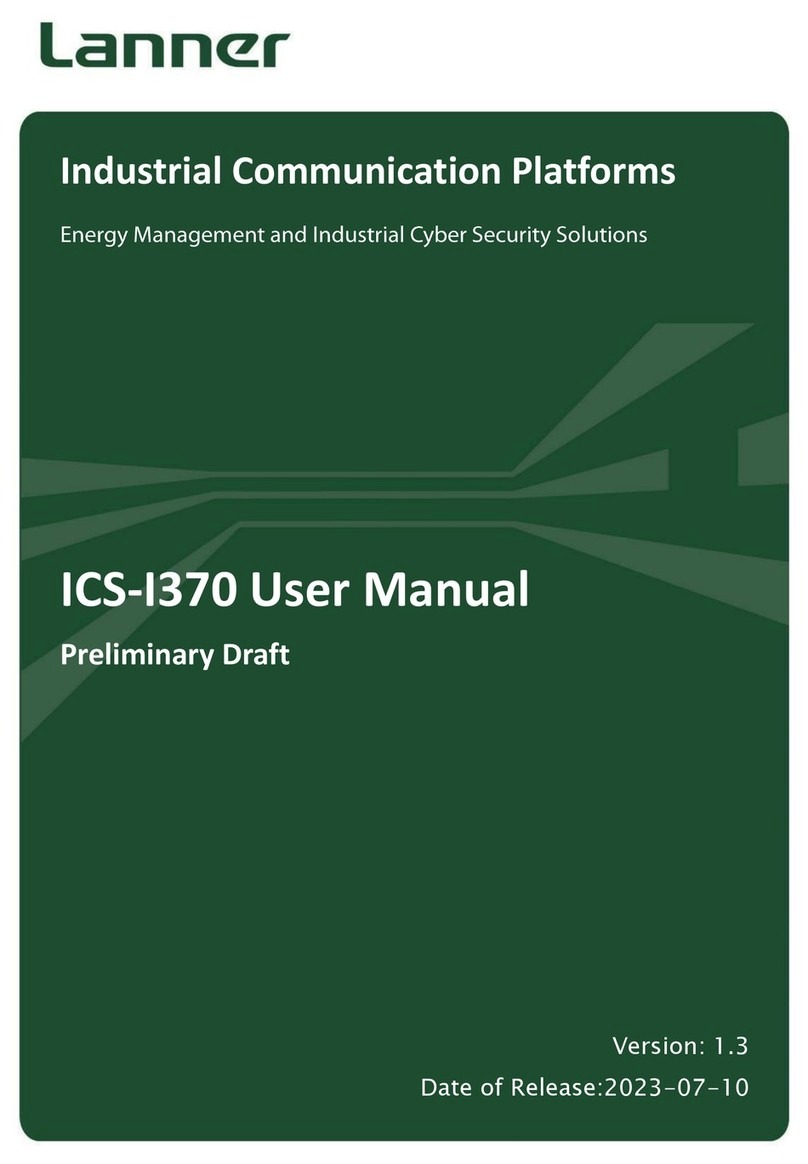
Lanner
Lanner ICS-I370 user manual
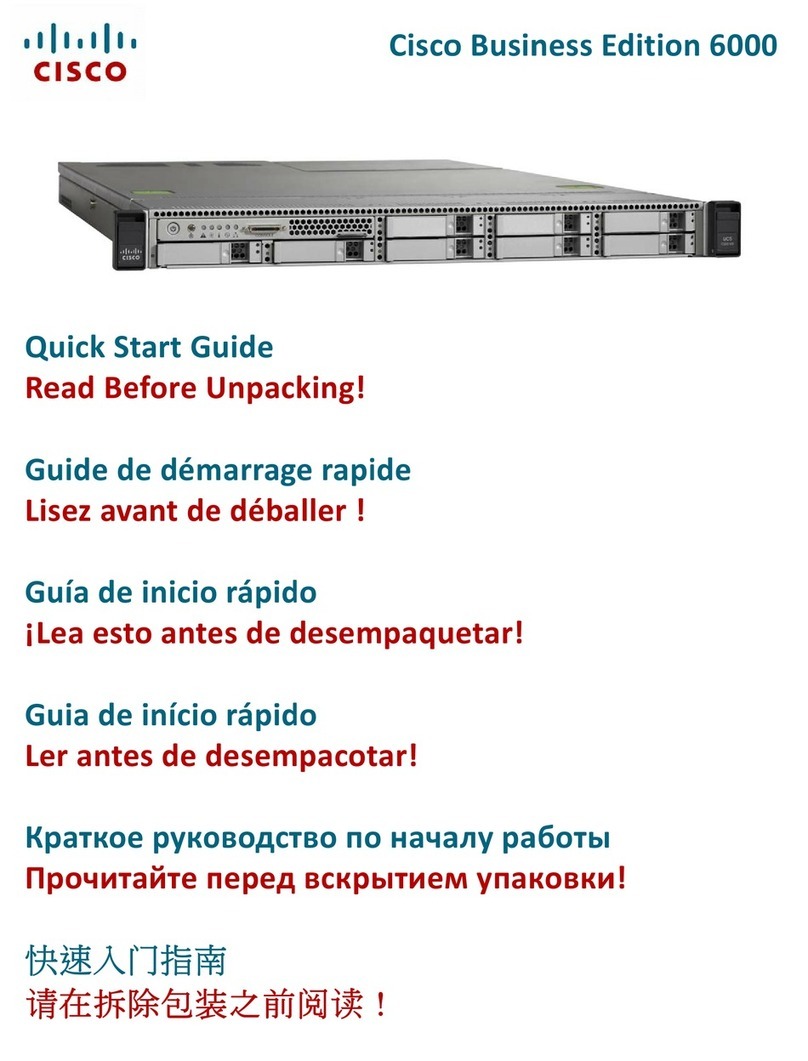
Cisco
Cisco UCS C220 M3 quick start guide
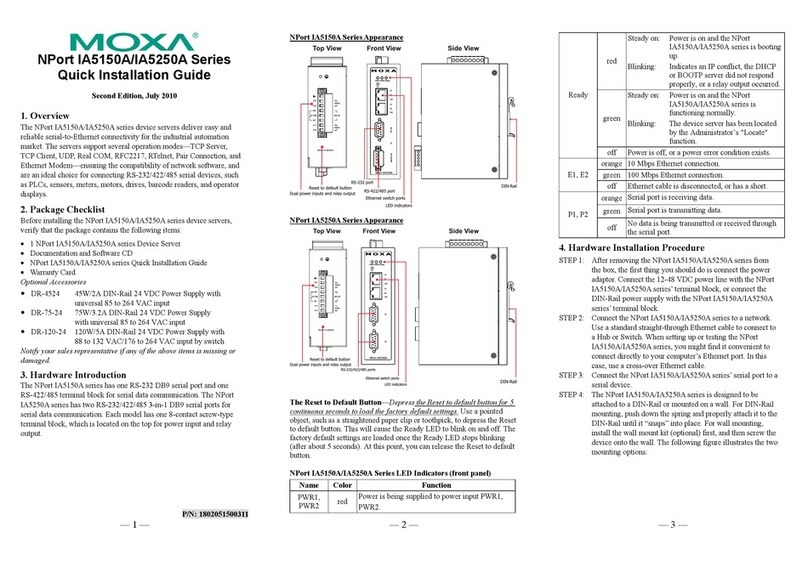
Moxa Technologies
Moxa Technologies NPort IA5150A Quick installation guide
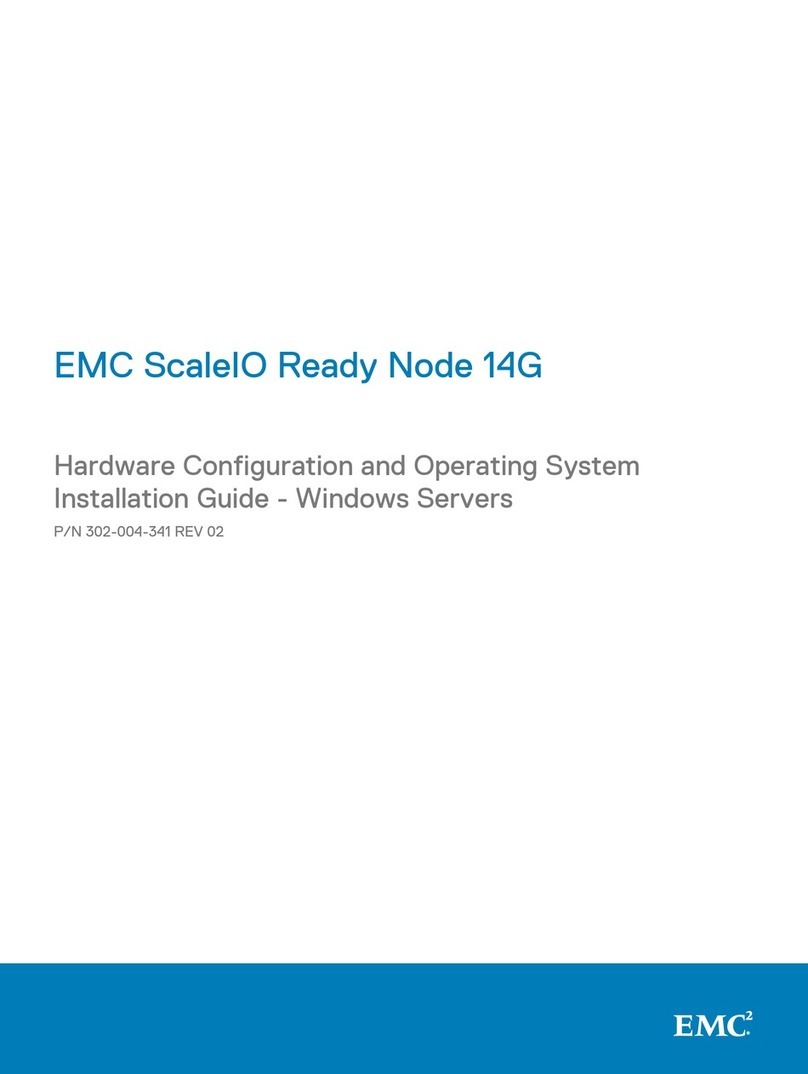
Dell
Dell EMC ScaleIO Ready Node 14G manual
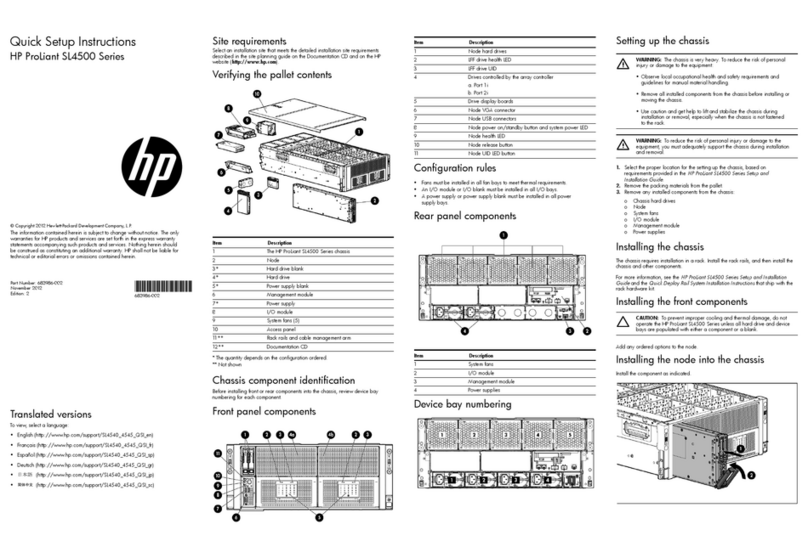
HP
HP ProLiant SL4540 Quick setup instructions

